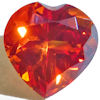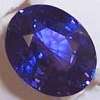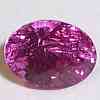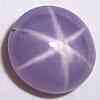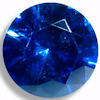
Sapphire is one of the most popular gemstones today and has been throughout history. Sapphire is a member of the Corundum mineral group along with its red colored partner Ruby. Sapphire encompasses all colors of Corundum except red and the colors range widely. The most common colors for Sapphire are blue, yellow, pink, and white with blue being the presumed color if no specific color is mentioned.
The most renowned Sapphires in history came from Kashmir and were much desired because of their incredible rich velvety blue color. These mines are essentially depleted today but there are still “Kashmir” color Sapphires found in Sri Lanka and Burma. Sri Lanka is famous not only for rich blue Sapphires but also lighter shades called “cornflower blue”. Because these lighter blues are almost exclusively from Sri Lanka, they are called “Ceylon Sapphires” after the old name for this island country.
The rarest of all colors is a blend of orange and pink called “padparadscha”. Before beryllium treatment was discovered, a natural color padparadscha Sapphire could sell for 50 times its blue counterpart. Today, beryllium treatments make this color easily attainable and have driven the price of the natural colored gems down significantly.
For the most part, you should consider that all Sapphires have been heat treated. Since 99% of Sapphires are heat treated, the market has accepted this as normal and for the most part will call these gems “natural”. Enhancements beyond a simple heat treatment should always be documented and disclosed. These most common of these treatments are surface diffusion treatments such as the beryllium treatment method. These surface diffusion gems have expanded the range and availability of some beautiful colored Sapphires such as the popular orange and hot pink varieties. Rarely is a Sapphire directly from the ground clear and rich enough color to facet without heating. These completely natural “unheated” gems are very rare and if certified properly can be quite valuable. Be very critical of claims for “non-heated” gems because this is very difficult to prove.
There are also many synthetics and imitations in the market, some of which are extremely difficult to distinguish from the natural gems. What we call lab created Sapphires are synthetic Sapphires that have essentially the same physical properties as the natural counterpart. These are available in many colors. These will give you your best look and provide the same hardness at a fraction of the cost. However, be aware of inferior alternatives such as lab Spinel, CZ and colored glass. These are imitations and may look similar but will not give you the same hardness and optical properties of Sapphire.
